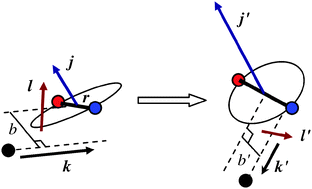Do vectors point the way to understanding energy transfer in molecular collisions?†
Abstract
This tutorial review examines the proposition that vector properties reveal more about the underlying potential energy surfaces controlling the inelastic exchange of energy in intermolecular collisions than conventional scalar measurements. Exciting recent experimental progress is summarized in the form of six selected cases studies. The new information that has been extracted is compared with the predictions of complementary theory. Likely future prospects and promising avenues for further progress are discussed. The treatment should appeal to all those with interests in the forces governing intermolecular interactions, especially in gas-phase collisions.


 Please wait while we load your content...
Please wait while we load your content...